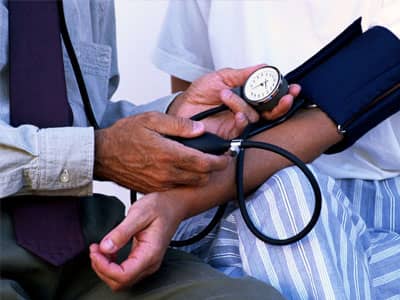
A migraine is not just a bad headache, it can feel like a prison of pain. The condition may cause throbbing pain, nausea, light sensitivity, sensitivity to sound or numbness in the face. About 12 percent of the population suffers from a migraine, the 6th most disabling illness in the world. "In 15-20 percent of attacks, other neurological symptoms occur before the actual head pain. Attacks usually last between 4 and 72 hours," according to the Migraine Research Foundation. The medical costs of treating migraines reached $5.4 billion, while people on average spend $40 billion annually to mitigate symptoms. Researchers are baffled on why people suffer from this perplexing and disabling disorder. They think it could be from abnormal brain activity temporarily affecting nerve signals, stress, hormones or a lack of sleep. "Scientists believed that migraines were caused by changes in blood flow in the brain. Many now think that they happen because of flaws in the brain passed down from parents," WebMD reported. We can't stop migraines completely, but we can take back our lives. Let's look into 6 ways to reduce your risks of migraines.
Cut back on caffeine.
For some people, caffeine can help migraine sufferers by causing the blood vessels to constrict. Many people take pain relievers, which contains caffeine. The other side to this is that too much caffeine could alter the positive impacts on a migraine. When people withdrawal from caffeine, they are at risk for more headaches. The American Psychiatric Association (APA), explained that withdrawal should be listed among anxiety disorders. “Caffeine withdrawal is defined as a syndrome resulting from abrupt cessation or reduction in caffeine, following prolonged daily use,” as explained in the manual. There is nothing wrong with a little caffeine, but use it in moderation.Watch what you eat.
Additives in food and drinks could trigger a migraine. Lunch meats, moldy cheese like Bri, alcohol, hot dogs and canned meats contain monosodium glutamate and could put you at risk. Pickled foods like kimchi, kombucha and jalapenos are also risky. If you love chocolate, you need to watch it because according to the American Migraine Foundation, chocolate is thought to be the second most common trigger for migraines after alcohol. "It affects an estimated 22 percent of people who experience migraines. It contains caffeine and also beta-phenylethylamine, which may trigger headaches in some people." Keep a food journal to help keep a record of what you're eating.Check hormone levels.
Fluctuating hormone from perimenopause or the beginning of your menstrual cycle can cause migraines. An estimated 60 percent of women with migraines link the headaches to their menstrual cycles. The estrogen and progesterone balance play a pivotal role author Sara Gottfried MD explained. "Many women are prone to getting headaches just before they start their periods – a time when estrogen levels take a dive. And if you’re one of the thousands of women who experience menstrual migraines." Track your cycle so you can better prepare what could be on the horizon. For some women, birth control pills can help level out the hormones, but this also depends on the individual.Reduce the light.
We all like the light, but this could lead to painful migraines. Keep sunglasses and hats nearby to help block out the light if you are outdoors. "Use flicker-free incandescent bulbs at home. And minimize glare on your computer screen by positioning it away from windows or closing your blinds," author Erin O'Donnell recommended. Since people spend most of their time in an office setting, fluorescent lighting has a flicker and is hard to avoid. People who are sensitive to that flicker may experience migraines. Discuss the problem with your supervisor or the human resource department to see what can be done. "Whoever is in charge of maintenance has a problem with leaving a fixture empty, suggest that they simply replace the tubes in your work area with burned out tubes," healthcentral.com proposed.Get more sleep.
Insomnia or broken sleep depletes energy, health, alertness and could cause migraines. We all struggle with sleepless nights, but if it persists for more than a few weeks--it needs to be addressed by your doctor. Wind down with soft music with the lights off, or start a yoga routine to prepare the body for sleep. Migraine headaches may be related to rapid eye movement (REM) sleep periods (state of dreaming). Additionally, adults with insomnia or who have poor sleep habits are more prone to mood disorders. Berkley News reported scientists found that a lack of sleep exacerbates anxiety, something which also sets off migraines. “Neuroscientists have found that sleep deprivation amplifies anticipatory anxiety by firing up the brain’s amygdala and insular cortex, regions associated with emotional processing. The resulting pattern mimics the abnormal neural activity seen in anxiety disorders.”Reduce stress.
Stress will put you at risk for a migraine. Dr. Merle Diamond is the Associate Director of the Diamond Headache Clinic in Chicago and explained that people with migraines are more susceptible to their environments. "So people who suffer from migraines have more sensitive nervous systems, which get kind of turned on when there is a change. So it could be a change in your environment like the weather changing, or it could be a change in your excitability level, for example, with stress." Establish a relaxing routine like taking a warm bath, exercising, eating better, praying and allowing events of the day to roll off your back may help lessen stress.You can't stop all migraines, but with some tweaks to your lifestyle, you can reduce the risks. If you need more ammo to deal with the condition, seek a medical practitioner.

